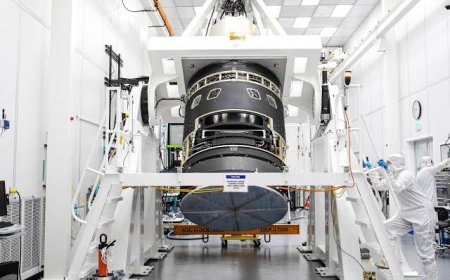Scientists Prove the Existence of Negative Time: A Paradigm Shift in Physics
In a groundbreaking revelation, scientists have presented compelling evidence for the existence of "negative time," a concept that could radically redefine our understanding of the universe and its underlying laws. For decades, time has been considered a one-way arrow, moving inexorably forward from past to present to future. This perspective, rooted in classical physics and bolstered by Einstein’s theory of relativity, has remained unchallenged. However, the latest study by an international team of physicists offers a startling new perspective: time may not only flow forward but could also exist in a "negative" form.

Negative time is not merely a reversal of the traditional timeline. Instead, it represents a theoretical dimension where events occur in a direction opposite to the conventional flow of time. Imagine dropping a glass and watching it reassemble itself and rise back onto the table—a behavior we associate with film played in reverse. While this might sound like science fiction, the researchers argue that under specific conditions in quantum systems, such phenomena could occur naturally.
The breakthrough came from a series of experiments involving entangled particles. Using advanced quantum computing systems, the scientists manipulated these particles within a highly controlled environment. They observed what appeared to be temporal reversal at the quantum level: changes in one particle seemed to influence another as if events were happening in reverse order. The researchers also explored the implications of negative time on energy transfer, finding evidence that certain processes could potentially "undo" themselves, effectively conserving energy in novel ways. This finding challenges the conventional interpretation of the second law of thermodynamics, which governs entropy and the "arrow of time."
The existence of negative time could revolutionize multiple fields of science. In physics, it may provide new insights into the nature of causality, quantum mechanics, and the origins of the universe. Some researchers speculate it could even bridge the gap between general relativity and quantum theory, two pillars of modern physics that have long remained incompatible. For cosmology, the discovery raises tantalizing questions about the Big Bang. Could the universe have a "mirror image" timeline running backward? If so, what would such a reality look like, and could it intersect with ours?
Despite its potential, the concept of negative time raises philosophical dilemmas. For example, what does it mean for cause and effect if the future can influence the past? Furthermore, can humans ever experience negative time, or is it a phenomenon restricted to the quantum realm? Critics argue that while the experimental data is intriguing, it does not conclusively prove the existence of negative time. They urge caution, suggesting that the observed effects might stem from currently misunderstood quantum behaviors rather than a new dimension of time.
The research team is planning further experiments to test the universality of their findings. They are particularly interested in whether negative time could manifest on larger scales, such as in macroscopic objects or even astrophysical phenomena. If validated, this discovery could open the door to technologies we can barely imagine today. Time travel, energy-efficient systems, and advanced simulations of the universe's past and future are just the tip of the iceberg. In the words of one lead researcher: "We’ve taken the first step into uncharted territory. Negative time may not just be a theoretical curiosity—it could be the key to unlocking the deepest mysteries of the cosmos."
~ Fahad Rahman
(Scipen world team)












































